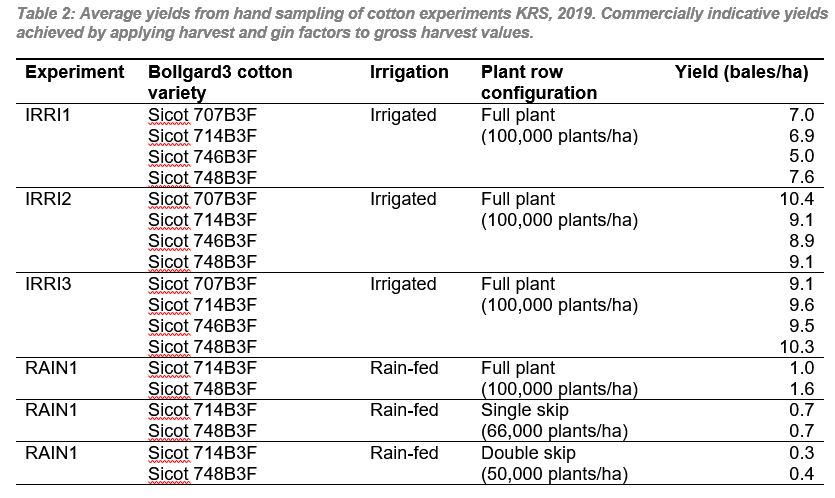Cotton trial update
Cotton research and cultivation has a long history in the Northern Territory (NT), with early research dating from the late 1800s on the botanic gardens at Palmerston. 2019 has seen the return of cotton to the NT with trial crops grown on both commercial farms and Department of Primary Industry and Resources research farms (Table 1).
Commercial size plantings on Edith Springs Station and Tipperary Station were commercially picked and sent to southern Queensland for ginning, while experimental plots on Katherine Research Station were hand sampled (Table 2). These trials grew the latest release Bollgard3 cotton varieties, which have been progressively developed from the release of the first genetically modified Ingard Cotton in 1996. The Bollgard3 cotton contains three Bacillus thuringensis (Bt) genes that code for three Bt proteins that control the caterpillars of Heliocoverpa species. Today’s varieties show great versatility and are grown from Lake Boga in Victoria to Tipperary in the NT.
The small plot experiment planted at KRS have been intensively monitored through the crop growth. The data gathered will be used to help validate the OZCOT and APSIM crop simulation models. DPIR and CSIRO plan to use OZCOT and APSIM to simulate a cotton industry across the NT to gain insights into the industry potential on a regional scale and better understand potential risks and agronomic issues, especially in a rain-fed farming system.
In addition to the pest controlling genetically modified (GM) attributes in current cotton varieties, traditional plant breeding has developed varieties that are higher yielding in Australian conditions, with shorter crop growth periods. With parts of Australia experiencing drought conditions, one benefit of these crops is the reduced amount of water required compared to other commonly planted crop species. Combing better genetics with improved agronomy, growers now use 40 per cent less water to produce one tonne of cotton lint than 10-15 years ago.
The experiment to grow genetically modified cotton in the Territory has been ongoing since December 2018, with the first of the harvests completed in recent weeks. It is anticipated the research into diversified mixed cropping systems will play a key role in developing the Territory’s agricultural industries.
Critical to the success of the trial is the department’s strong focus on robust biosecurity practices such as monitoring machinery movements that will ensure the potential of a viable cotton industry to become a major contributor to the internal and export economy of the NT. The work undertaken to prevent the introduction and transportation of pests will ensure that the future of the industry is secure, instilling confidence in investors and potential investors that future crops and industry will be protected.
In addition to a thriving agricultural industry, the outcome of the program will assist industry to diversify their farming systems and production with information and strong research partnerships to support cropping systems development.
Give feedback about this page.
Share this page:
URL copied!

